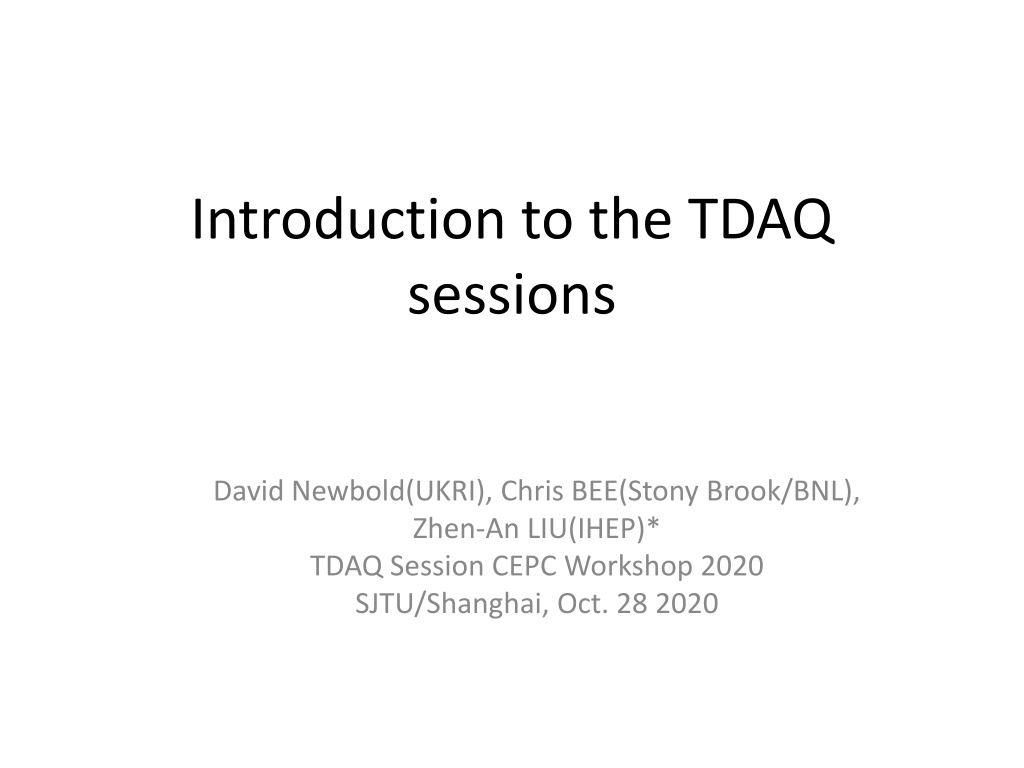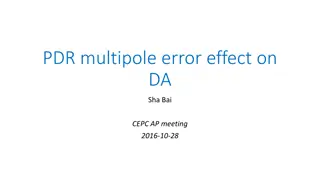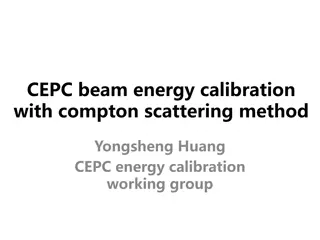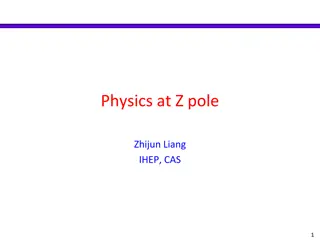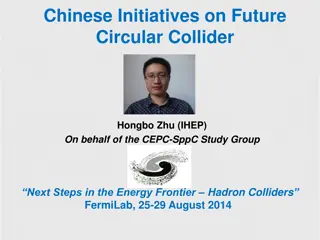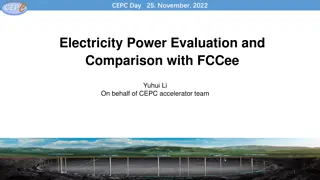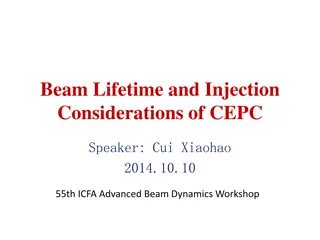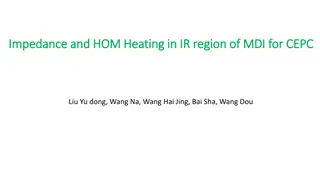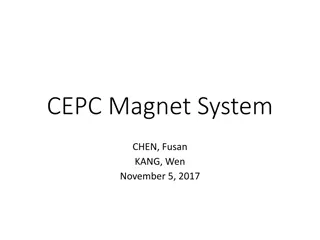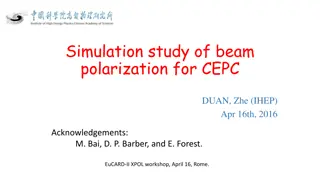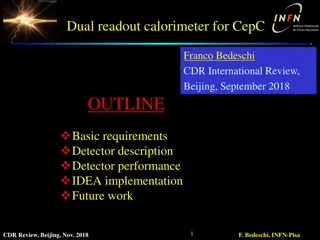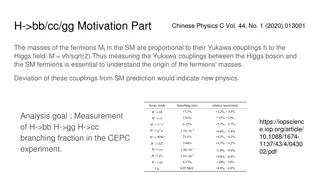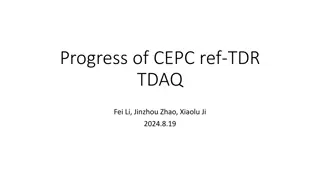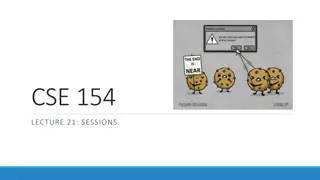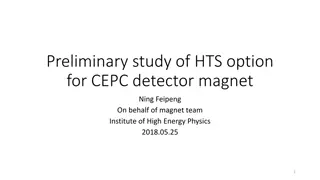Introduction to TDAQ Sessions at CEPC Workshop
This session introduces the TDAQ (Trigger and Data Acquisition) aspects at the CEPC Workshop, featuring talks on sub-detectors, data volume, readout implementations, and more. Clear requirements from various detectors are discussed, along with special technologies in pixel readout. Time zone adjustments are made for presenter convenience.
Download Presentation

Please find below an Image/Link to download the presentation.
The content on the website is provided AS IS for your information and personal use only. It may not be sold, licensed, or shared on other websites without obtaining consent from the author.If you encounter any issues during the download, it is possible that the publisher has removed the file from their server.
You are allowed to download the files provided on this website for personal or commercial use, subject to the condition that they are used lawfully. All files are the property of their respective owners.
The content on the website is provided AS IS for your information and personal use only. It may not be sold, licensed, or shared on other websites without obtaining consent from the author.
E N D
Presentation Transcript
Introduction to the TDAQ sessions David Newbold(UKRI), Chris BEE(Stony Brook/BNL), Zhen-An LIU(IHEP)* TDAQ Session CEPC Workshop 2020 SJTU/Shanghai, Oct. 28 2020
Many Thanks to the contributors The Conveners are grateful to the presenters Time difference are taken into account to avoid inconvenience to the presenters, we apologize if still not Detailed discussion will be in the second session 2020/10/28 CEPC WS2020/TDAQ Introduction 2
Purpose: New iteration of understanding of the sub-detectors 8 Talks from all detectors Data Volume and channel count under different machine running modes Higgs W Z New assumptions about readout bandwidths and readout implementation and power consumption Any zero suppression or compression they might carry out at the front end No YES, then how 2020/10/28 CEPC WS2020/TDAQ Introduction 3
Clearer requirements to TDAQ 8 Talks from all detectors Needs for control and timing signals in FEE Clocks, Synch,BC0,L1A,SC, Any views/preferences on readout style(triggered or trigger-less readout) Trigger sequential readout Continuous sequential readout Non-sequential readout 2020/10/28 CEPC WS2020/TDAQ Introduction 4
Morning/Afternoon for Time Zone Morning 1. 2. 3. 4. Afternoon 1. Requirement from the LumiCal, Suen Hou (IPAS) Requirement from the Vertex Detector, Wei Wei (IHEP) Requirement from the TPC, Requirement from both ECAL & HCAL, Huirong Qi (IHEP) Yong LIU (IHEP) Requirement to from Drift chamber, (INFN-Lecce) Requirement from DR Calorimeter, Roberto Ferrari (INFN) Requirement from Muon detector, Paolo Giacomelli (INFN-Bo) Requirement from Silicon Tracker, Franco Grancagnolo 2. 3. 4. Jens Dopke (STFC RAL) 2020/10/28 CEPC WS2020/TDAQ Introduction 5
Special Technology on readout Pixel readout technologies and the challenges for the future By Maurice Garcia-Sciveres (LBNL) 2020/10/28 CEPC WS2020/TDAQ Introduction 6
Special Technology on Hardware Trigger-less System LHCb Software-Only Trigger By Dorothea vom Bruch(LPNHE) 2020/10/28 CEPC WS2020/TDAQ Introduction 7
Special Technology on Software trigger ATLAS HLT tracking optimization By Mark Sutton(Sussex) 2020/10/28 CEPC WS2020/TDAQ Introduction 8
Special Technology on TCDS Precision timing distribution systems and their current performance By Eduardo Brandao De Souza Mendes(CERN) 2020/10/28 CEPC WS2020/TDAQ Introduction 9
Discussions on DCDS/TDAQ Accelerator interface with DCTD Machine Clock/Synchronization Signals BC0, revolution, TDAQ status feedback Readout Structure IHEP Experience and Application in Belle II and CMS Which one prefer? Micro-TCA(MTCA) or Customized ATCA or xTCA (ATCA-PICMG3.8/MTCA.4) or Other standard? 2020/10/28 CEPC WS2020/TDAQ Introduction 10
Discussions on DCDS/TDAQ(cont.) Online networking and computing Hardware/Firmware Technologies Common hardware(backend readout) FPGA/GPU/ based processor Common Firmware Software DEV platform Prototypes development Welcome for R&D How to collaborate Demo System development Components Key modules R&D Task sharing Other more issues 2020/10/28 CEPC WS2020/TDAQ Introduction 11
Next step After we can gather the updated requirements from all sub-detectors, we will review them for consistency, and to inform what future work is needed on TDAQ. 2020/10/28 CEPC WS2020/TDAQ Introduction 12
